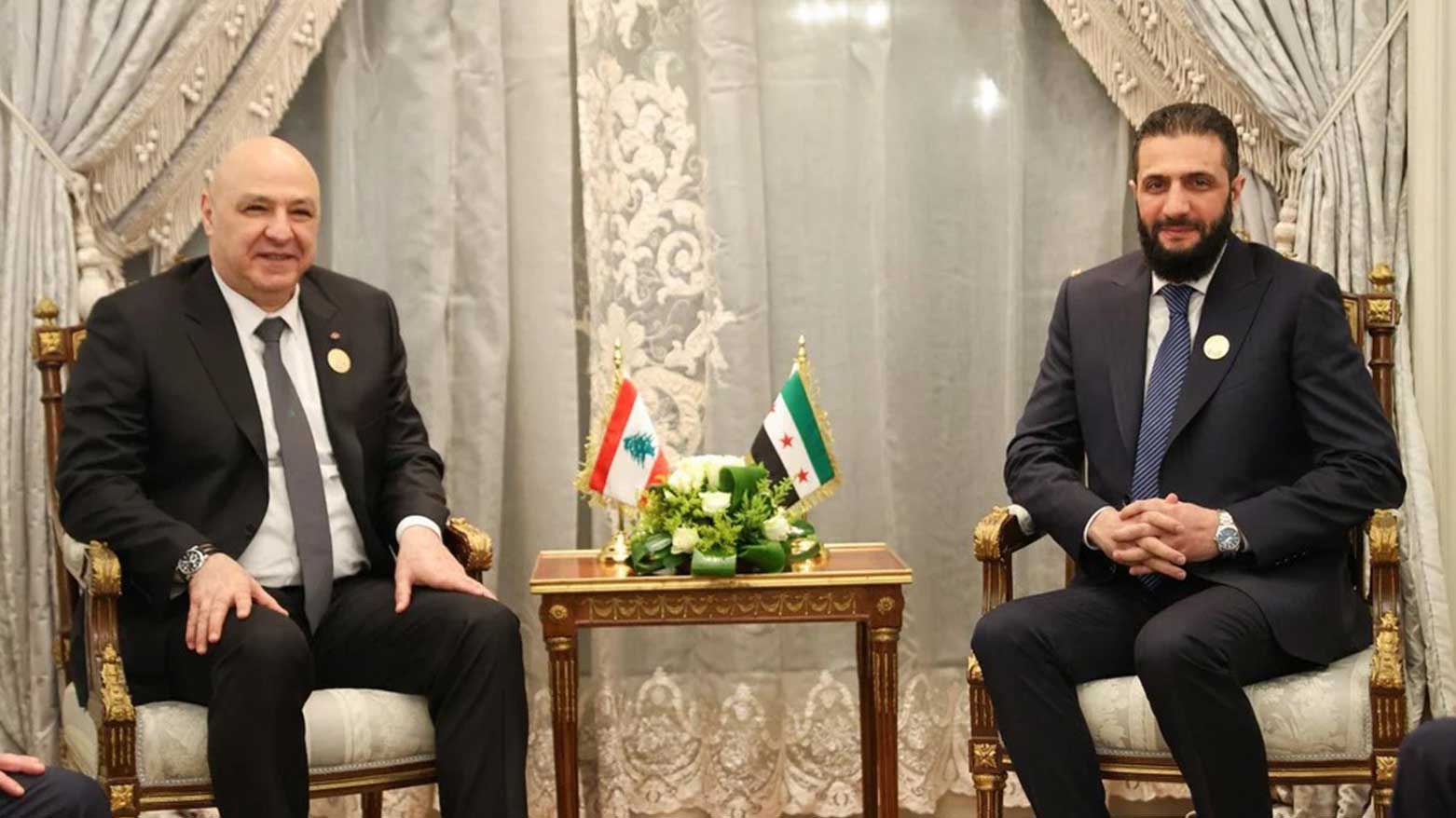Nine Months After Assad’s Downfall, Beirut and Damascus Struggle to Rebuild Trust
Chief among unresolved issues is the fate of around 2,000 Syrians in Lebanese prisons, including hundreds accused of armed attacks. Damascus wants them transferred back to Syria, but Lebanese authorities insist each case must be adjudicated separately.

ERBIL (Kurdistan24) — Nine months after the sudden collapse of Bashar Assad’s decades-long rule in Syria, political relations between Beirut and Damascus remain fraught with tension, despite both countries facing common security challenges along their shared border.
The fall of Assad, toppled by a lightning offensive of Islamist insurgents in late 2024, marked the end of the 54-year Assad dynasty that had dominated Syria and heavily influenced Lebanon for decades. In Lebanon, meanwhile, Hezbollah — Assad’s closest ally in the region — suffered major setbacks in a bruising war with Israel that ended with a fragile U.S.-brokered ceasefire.
Despite these seismic changes, mutual distrust continues to shape the relationship between the two neighbors. Recent border clashes have left several people dead or injured, including civilians, and highlighted the difficulty of restoring stability. Although both governments have coordinated on border security to an extent, attempts to reset broader political ties have been slow. While two Lebanese prime ministers have visited Damascus since Assad’s fall, no Syrian official has traveled to Lebanon.
Historical Shadows
Relations between Syria and Lebanon have long been marked by tension, with many Lebanese fearing domination by their larger neighbor. Syrian troops first entered Lebanon in 1976 under the guise of peacekeeping during the Lebanese Civil War, but remained for nearly 30 years, exercising heavy-handed control until withdrawing in 2005 following the assassination of former Lebanese Prime Minister Rafik Hariri.
Diplomatic relations were only formally established in 2008, reflecting Syria’s first official recognition of Lebanon’s sovereignty since its independence in 1943. Yet, suspicions remained entrenched, reinforced during Syria’s 2011 civil war when Hezbollah sent thousands of fighters to support Assad and hundreds of thousands of Syrian refugees poured into Lebanon.
Current Flashpoints
Today, unresolved issues continue to hinder reconciliation. Chief among them is the fate of around 2,000 Syrians in Lebanese prisons, including hundreds accused of armed attacks. Damascus wants them transferred back to Syria, but Lebanese authorities insist each case must be adjudicated separately.
The refugee crisis also looms large. Lebanon, a country of about five million people, hosts more than 700,000 registered Syrian refugees and potentially hundreds of thousands more unregistered, straining its already fragile economy. Beirut has repeatedly pressed for their return, arguing that the end of Assad’s rule should remove obstacles, but Damascus has resisted, demanding guarantees and the return of frozen Syrian deposits trapped in Lebanese banks since the 2019 financial meltdown.
Border violence has further deepened mistrust. In March, Syria accused Hezbollah fighters of crossing into its territory and killing three soldiers, though Lebanese officials dismissed the claims as clashes involving smugglers. Tensions flared again when Beirut objected to Syria’s appointment of Abdullah Shehadeh, a Lebanese defector known as “Abu Youssef the Lebanese,” to head security in the Syrian province of Homs, which borders Lebanon.
Prospects for the Future
Despite repeated tensions, both countries recognize the necessity of cooperation. In recent months, Lebanon adopted a U.S.-backed plan to fully demarcate its border with Syria, and defense ministers from both countries signed agreements in Saudi Arabia to enhance coordination.
Observers caution that progress will only be made through incremental steps. Radwan Ziadeh, a senior fellow at the Arab Center in Washington, told AP that Lebanon and Syria should address disputes issue by issue rather than attempting a comprehensive settlement. He argued that gradual confidence-building measures, especially on border security and smuggling, could ease hostilities over time.
Still, with deep historical grievances, economic crises on both sides, and persistent distrust, the path toward normalized Lebanon-Syria relations remains uncertain.
Timeline: Key Turning Points in Lebanon-Syria Relations
1976 — Syrian troops enter Lebanon during its civil war, initially as peacekeepers.
1990 — End of Lebanese Civil War, but Syrian forces remain entrenched.
2005 — Assassination of Lebanese PM Rafik Hariri sparks massive protests; Syria withdraws troops after 29 years.
2008 — Syria and Lebanon establish diplomatic relations for the first time.
2011 — Syrian Civil War begins; Hezbollah intervenes militarily to support Assad.
2019 — Lebanon’s financial meltdown traps billions in Syrian deposits in Lebanese banks.
2024 — Bashar Assad toppled by Islamist insurgents; new government formed in Damascus.
